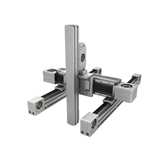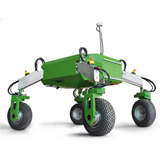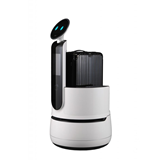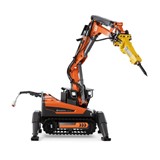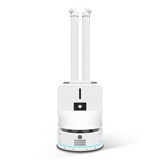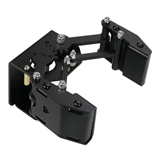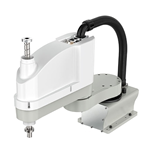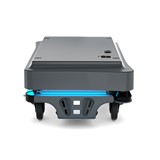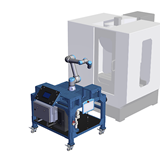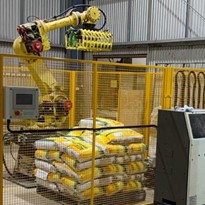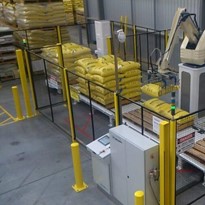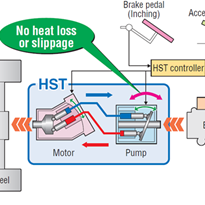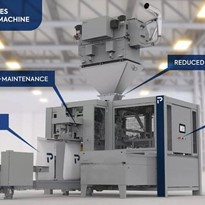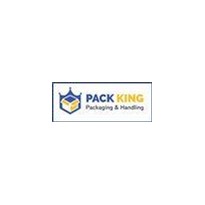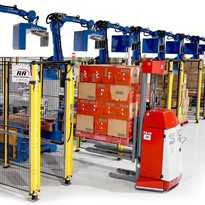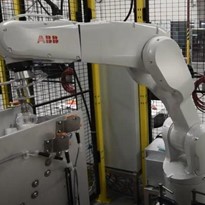The benefits of incorporating machinery automation & robotics into manufacturing are now widely recognised. Since their conception in 1948, palletisers have been imperative to the production chain in factories all over the world. As demand increases, palletisers are increasingly advanced and come in various types and specifications, which breed two main categories – conventional and robotic.
Before making an informed decision on the type of pallet automation systems suitable for your business, it is crucial to understand the business’ packaging needs. Several useful questions to ask include:
“What is the production volume required both now and in 5 years’ time?”
“What packaging types and stack pattern requirements do I have now and are these likely to change in the near future?”
“What is my current manual palletising process costing me per year?”
“What health & safety risks do I have with my current manual palletising process?”
After fully grasping the production needs of the business, let’s move on to the differences, key features, and benefits of conventional and robotic palletisers.
Conventional Palletisers
To provide a complete overview of conventional palletisers, it is essential to dive into the main subcategories: low-level and high-level palletisers.
A low-level palletiser has the product infeed at floor level. Typically a gantry mounted gripper will pick up the bag/case and place it in the required pattern on a stationary pallet. Often a frame is used to help form the pallet stack and keep it uniform. A low-level palletiser has several benefits.
- They are compact and use less floor space than high-level units. This means they can be installed closer to filling equipment and save floor space.
- They are typically the lowest cost palletiser for >20kg payloads
- Maintenance is easier as most of the unit is accessible from floor level.
- Good for low to medium packing speeds
The high-level palletiser is fed via a conveyor into the top of the unit. The bags or cases are placed onto a forming plate that forms each layer and then deposits onto the pallet below. As each layer forms, the pallet is lowered until it has a complete stack and is at floor level ready for moving via conveyor to the wrapping process. This high-level method of palletising provides the following benefits
- High speed palletising
- Layer forming and compacting frames, which provide very accurate and tidy stacks
- The ability to stack high pallet loads
Regardless of the two subcategories, conventional palletisers present a number of benefits, which include being more suitable for mid-high speed product processing, easier to troubleshoot without special training, and typically costs slightly less than its counterpart.
Robotic Palletizers
The key differentiating feature of this palletiser is the robot arm, which is capable of autonomously performing tasks assigned by a programmable logic controller. The gripper, which is an end-of-arm tool, is a crucial component that is usually customised to handle specific products.
Depending on the pallet configuration, a robotic palletiser is able to handle one or more units at a time and form multiple layers on a pallet after picking the products off a conveyor.
Several key advantages offered by robotic palletisers include easier adaptation and increased versatility to accommodate different pallet patterns and product types, less space requirement, the possibility of mixed case palletising, and the ability to handle multiple different Stock Keeping Units (SKUs) by a single robot.
To Conclude
Varying on the type of product and process requirement, a specific type of palletiser may be more suitable than the other. Conventional palletisers remain the common choice as a mid-to-high-speed palletising solution. However, robotic palletisers excel in low-to-mid speed, multi-line, and bag palletising applications. Their continued technological advancement and falling costs are boosting their popularity and will give them an increasing competitive edge with time.
At Aurora Process, we are more than able to provide custom automation solutions to suit your needs. Whether it be automatic bag palletiser, bag palletiser, wrapping pallets, or others, we are happy to assist you to find your right industrial packing equipment. Be sure to contact us or book a free on-site consultation today.




